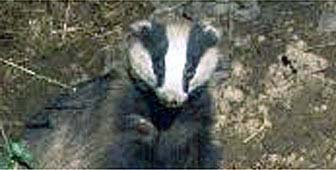Government proposes more “wildlife bridges” to safeguard animals

The Federal Office for the Environment has proposed building dozens of "wildlife bridges" to help animals safely cross Swiss roads.
Switzerland already has more than 300 such bridges and tunnels specifically designed as wild animal crossings. The new plan includes a proposed overhaul of the existing network, and the construction of 51 new structures over the next 10 years.
The bridges are very expensive. The estimated cost of the project runs into hundreds of millions of francs. Willy Geiger, the vice-director of the Federal Office for the Environment, quoted a ballpark figure of between SFr400 million and SFr 500 million ($240 million – $300 million).
Dead animals on the road are a common sight for motorists. Each year, some 20,000 large animals are killed on Swiss roads, along with thousands of smaller animals such as toads and frogs, which go largely unnoticed.
The environmental office’s guidelines are designed to protect both wildlife and motorists.
Geiger told swissinfo that the bridges and tunnels are very important because they give animals a way of moving around their habitats, which have been broken up by transport links and buildings.
The bridges
“The bridge is like a normal bridge,” he said, “But it is not used by humans but by fauna. We have three kinds of bridges, one is a standard 45 metres wide, the second is 25metres wide and the third type are actually tunnels, which go under roads.”
He added that big animals such as deer, foxes and wild pigs use the overland links, whereas smaller animals such as frogs, salamanders and snakes use the underground tunnels.
Of the existing 303 animal bridges, 47 are unusable and more than half are only partly accessible to the animals. The remaining third are fully operational.
Species survival
Even though the “wildlife bridges” are expensive, Geiger believes they are necessary if certain species of animals are to survive in Switzerland.
“The biologists in our office say that wild animals have a big problem with their habitat, which has been interrupted and fragmented,” Geiger told swissinfo. “[Because of this] we have a genetic drift which could bring the long term extinction of certain populations [in Switzerland].”
He says it is imperative to create new wildlife bridges and improve existing ones to ensure that animals can cross from one area to another and mate with different herds.
A study from his department highlights the shrinking size of animal’s habitats. It states that 30 years ago the average roaming area of a deer spanned 4.3kilometres but by the early nineties this had shrunk to just 600 metres.
swissinfo with agencies

In compliance with the JTI standards
More: SWI swissinfo.ch certified by the Journalism Trust Initiative
You can find an overview of ongoing debates with our journalists here. Please join us!
If you want to start a conversation about a topic raised in this article or want to report factual errors, email us at english@swissinfo.ch.